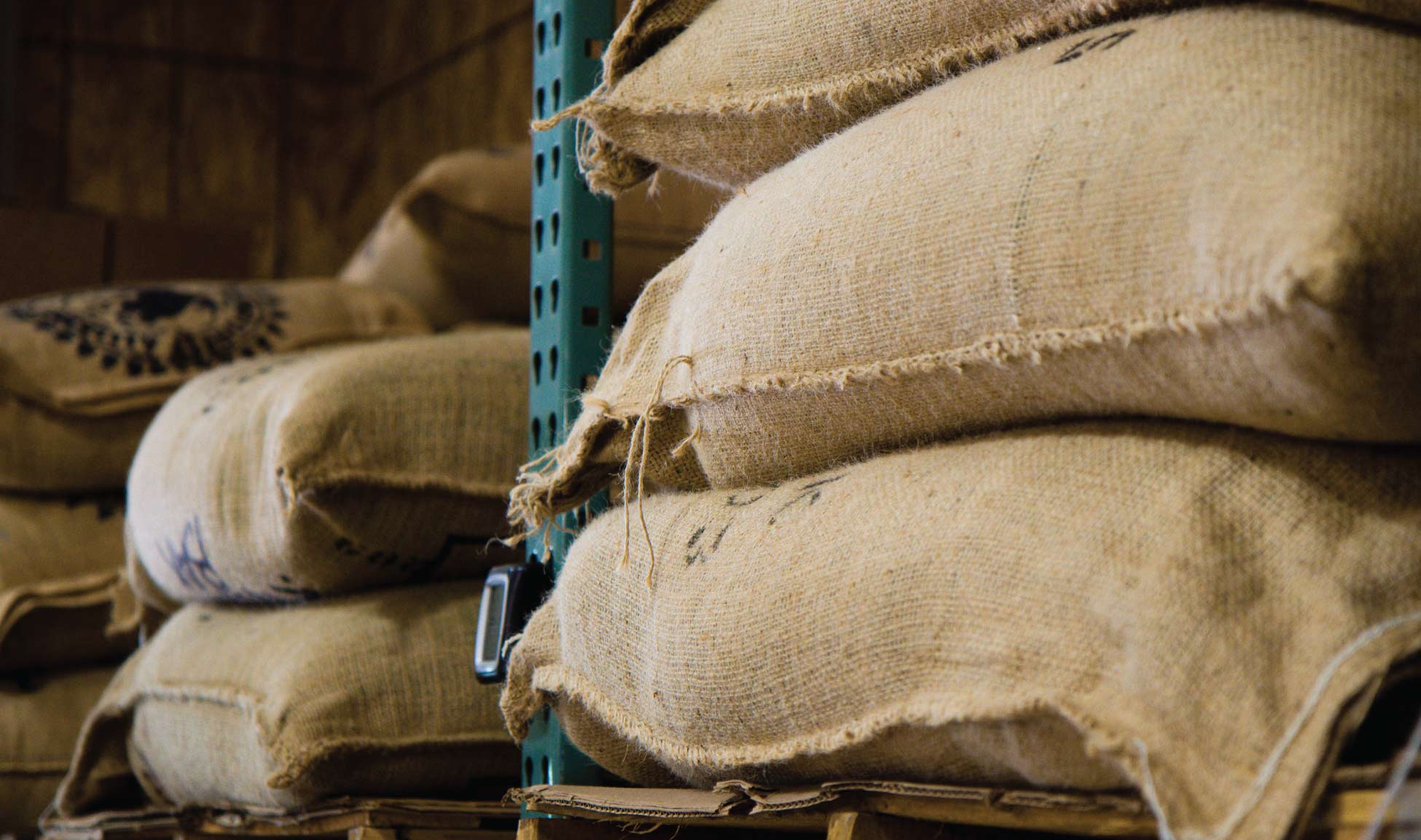When small manufacturers and manufactures want to expand their distribution channels, the planning usually falls in the direction of increased sales channels. Either through more sales locations (such as more stores) or new partnerships with retailers. In digital commerce, sales on virtual marketplaces are an additional factor. Amazon is the largest marketplace in this respect.
Whether wholesale or marketplace, when manufacturing companies want to move forward with sales outside their own channels, the path usually leads to wholesalers. These open up a larger group of customers for the manufacturer with a potentially larger Willingness to buy.
Of course, both parties must fit together in terms of the target group so that the cooperation can bear fruit first. In other words, the organization between the two must be planned smoothly.
For the exchange of information in the product area, so-called article master data is a common format. They help for clarity, information, product knowledge and processing purposes in (worldwide) logistics. Especially for foreign trade, the specified data is important for conformity.
Conscientious maintenance of master data is therefore an essential must.
So what exactly do article master data sheets contain and what do they look like? As always, we will give you an example in relation to the food industry. Let's go!
Everyone knows product packaging: Sometimes they are colorful, sometimes classy in black and mostly transparent plastic. What the EU wants to see, however, is the fine print.
Boring, but mandatory.
Most of the time, the focus is on the number of calories and the list of ingredients. In professional trade, however, it is about much more information. Let's start with the item number, then to the manufacturer to the customs tariff number.
This data can help in economic processes. Both in logistics (weight, storage, etc), in sales and in marketing.
The master data sheets are the standard in retail to exchange product information (digitally). A small excerpt for our Reeham Origin Coffee:
| Item number | R001 |
|---|---|
| Item name | Reeham Origin |
| EAN | 4260681440014 |
| Sales description | Coffee beans roasted, whole bean |
| Article description | Coffee beans |
| Ingredients | Coffee beans, roasted |
| Manufacturer | Reeham Roastery International Ltd. |
| Brand name | Reeham Coffee |
| Quantity | 250g |
| Packaging unit | Pouch |
| Allergens | none |
| Durability | 365d |
| Caffeine | yes |
| Customs tariff number | 09012100 |
| etc | etc |
Quick tips:
- EAN you get at GS1 Germany
- You can find customs tariff number on Customs tariff numbers
Product master data are mostly spreadsheets, which contain the complete information of a product. Every detail, no matter how small, is listed and actively maintained.
Wholesalers and distributors / resellers work on the basis of master data. They serve the overview, the information, but also the security. The latter in the sense of protection for the consumer, for example, through the labeling of allergens, but also as protection for the retailer when it comes to observing and safeguarding legal regulations.
After all, you want to work with professional and competent partners.
Item master data is most often assumed by the larger intermediaries. They work with digital tools such as atrify to obtain up-to-date product information in real time. As a supplier or manufacturer, you have access to this data management system as an Edeka partner, for example.
Form
There is no exact form. Each wholesaler has its own patterns and procedures. However, it helps if you as a manufacturer keep a general data sheet of all products as detailed as possible.
Images are also part of the data, after all, you also want to give the wholesaler an appealing experience. The more information the better and also faster the process in signing the contract. Less headaches for everyone. Most of the time the data sheets are in Excel format or importable .csv format.
Some still maintain formats that resemble a profile. They are more suitable as marketing material.
In general, these data can be used in the EU-compliant Product packaging and the labeling obligation help. In the case of food, for example, spreadsheets can be used to quickly find allergens and indicate them on the product packaging.
Side effect - product packaging
Customers only see the relevant part of the items master data. For example, if they are concerned about the calories, locate their allergies in the ingredients and want to follow the instructions for use. If they have questions, consumers can also see the manufacturer's direct address on the packaging. This is in fact part of the mandatory information.
The design of the Product info on the packaging is associated with minimum requirements. The font size, for example, must be at least 1.2mm, measured at the letter "x".
The exact dimensions of the product packaging are usually included. They can help in the choice of outer packaging and shipping. Storage can also be addressed to the conditions of the packaging.
In general, many plannable processes are possible apart from the actual product properties, but rather the framework conditions. In this case, we clearly address the mostly underestimated work of warehouse logistics.
Internationality
For intensive and complete data maintenance, it is advisable, especially for foreign trade, to localize everything again to at least the English language. If you are lucky, the buyer will do the translation himself. Depending on the partnership but also product popularity, this task can move back and forth between both parties.
In any case, the master data should be localized to the language of the target country and at least to English. Many large manufacturers are leading by example and already print the common languages for product packaging. In the EU market, these include:
- English
- German
- French
- Dutch
- Italian
- Spanish
If you have already printed the packaging in only one language, you can cover the back with a permanent international label that is not easily removable.
Thus, wholesalers and their customers would also be satisfied.
Ensure marketability
In theory, the data on the master data sheet provides a lot of product information. These are usually binding when a contract is concluded. Even a small change in the product name can lead to a lot of work...unfortunately. So digitization is not quite there yet.
In practice, the actual data must correspond to reality. However strange it may sound, not all manufacturers adhere to the data. It becomes especially critical with perishable foods and the associated indication of the best-before date.
If a faulty product enters circulation and results in a recall, this not only costs a lot of money, sales and nerves, but also, among other things, existing partnerships. Last but not least, a loss of face for the brand, but usually only as a result of poorly handled communication.
To reduce error rates to a minimum here, we therefore recommend strict quality management.
Quality management
Quality managers check all relevant factors in the supply chain. External as well as internal conditions are turned upside down. It starts with the receipt of goods.
When you get right down to it, even a minimal word twist can be grounds for returning goods.
If you take a closer look at the content aspect, the consistency, the color and even the optical filling quantity of foodstuffs can strongly cloud the first impression in quality management. With good batch traceability, the manufacturer can then still track down the production and, if necessary, rectify or destroy it. It is therefore always advisable to secure a retention sample.
There is not always only one source for the errors. All company departments that come into contact with the item are potential danger zones. Because of this, understandably, there should be a benchmark of quality standards in all areas. The smaller the company, the more manageable. The larger, the higher the urgency to hire an internal quality manager.
Externally, it can be certification bodies that carry out a paid inspection at long intervals.
Certifications and insurances
As a competent manufacturer of products, insurance and certification are part of the Wholesale to it. Not only to increase its trustworthiness and quality, but also its own financial security. Regarding the latter, we would like to emphasize again that this should be above everything. A single faulty large order can already lead to massive damage. Item.
The safety aspect includes business liability insurance, including product liability. The insured amount depends on the individual product and manufacturer. Intermediaries, such as food retailers (LEH), require these insurances when signing the contract. Amazon also activates the food category only after detailed inspection of such documents.
In addition, they would like to see at least one hygiene certificate of a higher standard. The IFS certificate from Fresenius Institute for example, includes the HACCP standard, which every business that comes into contact with food must have. In addition, the IFS sets even higher standards that also apply internationally. The status quo, then.
For some traders, especially in the wholesale of the established supermarket chains, even more authoritative certifications are required. Among others, the TÜV seal plays in a very high league, where not only the product, but also the entire supply chain and the actions of the company are literally scrutinized even more clearly than with the IFS.
For whom is master data relevant?
Food Retailer
As already mentioned, larger food retailers such as Rewe, Edeka and others generally work with item master data. They are part of the contract and must always be kept up to date. The data that is entered also ends up on brochures and cash register receipts, among other things.
Amazon
As an Amazon seller, you are held accountable to strict quality control, which should meet the highest standards. We all know how accommodating Amazon is towards its customers. This is also what the giant is known for.
As a small Amazon partner, you can quickly be warned or blocked. A retuning is then hardly feasible.
Colleagues
Only a few colleagues know the 100%-tigen characteristics of a product. At large department stores, the sheets help with sorting, customer correspondence and general information needs. Too often, companies still ask for information that every colleague knows should.
Private labeling
Also with the Private / White Labeling the information contained is of crucial importance. Most of the time, the interested parties only look at the friendly fact sheet format, as described above. In addition, the eyes then also fall on the origin of the ingredients and the ingredients.



